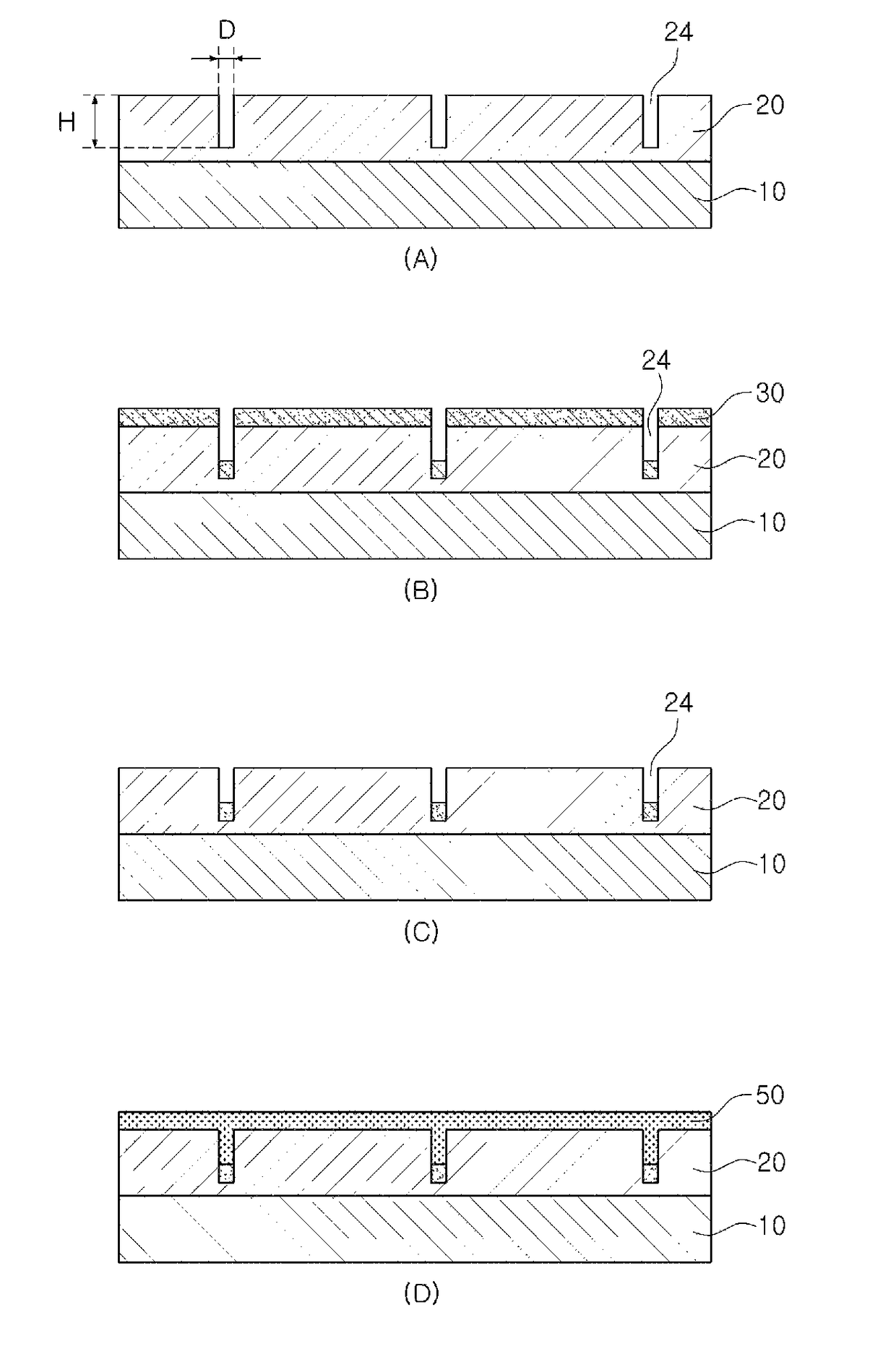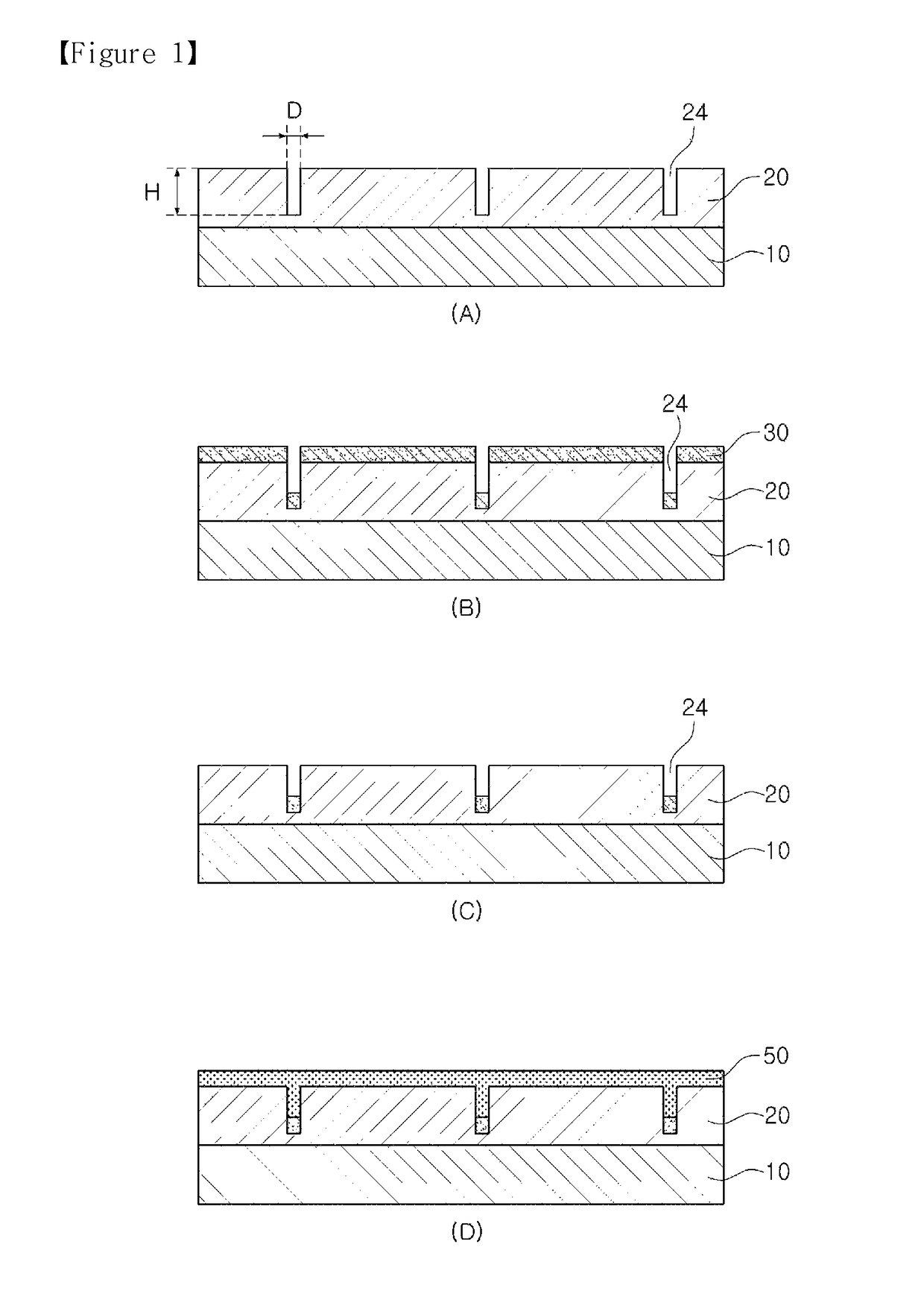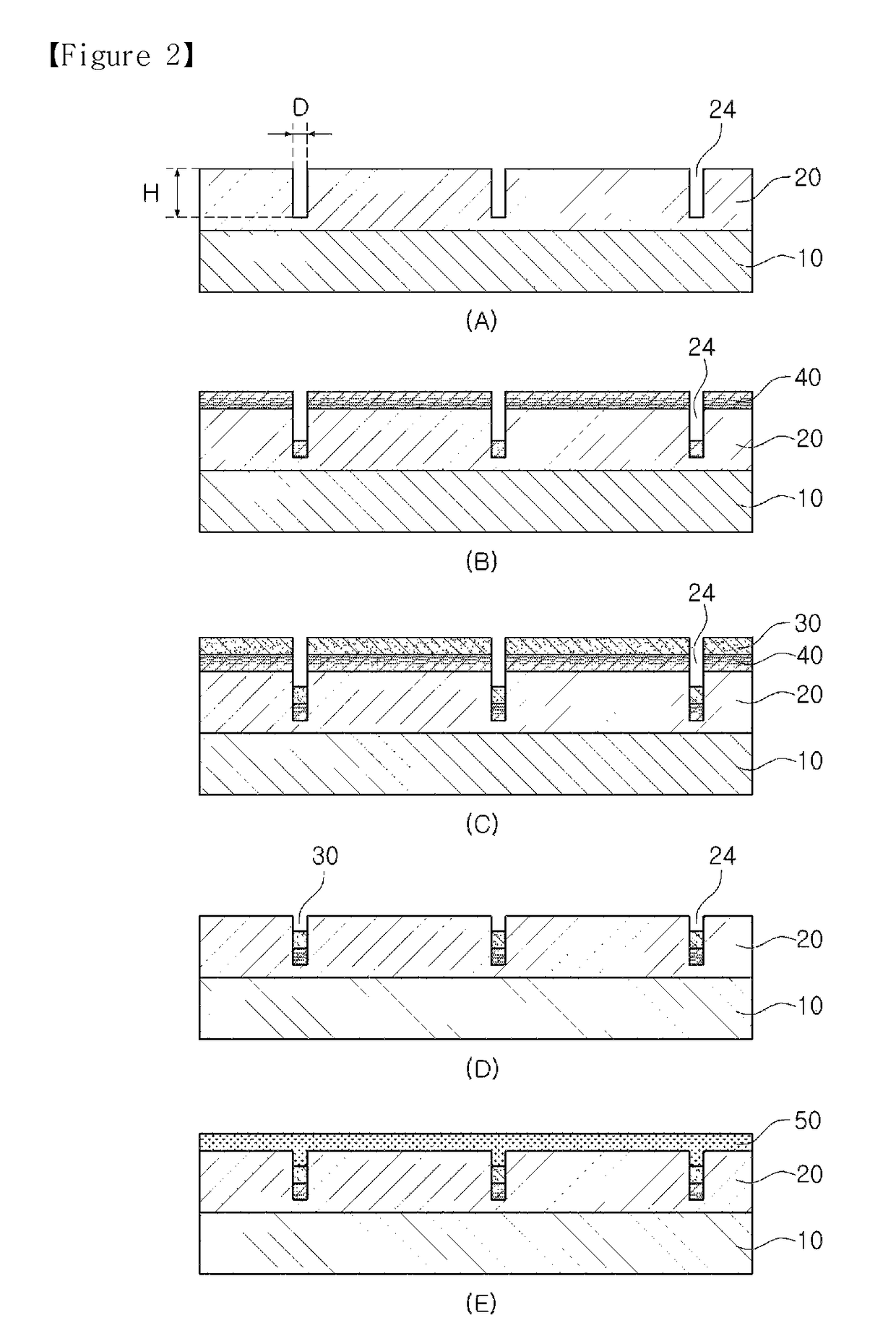Method of manufacturing a transparent substrate
a technology of transparent substrates and manufacturing methods, applied in the direction of conductive layers on insulating supports, magnetic circuits characterised by magnetic materials, instruments, etc., can solve the problems of increased defect rate, difficult to implement such a fine line width, and deterioration in display quality, so as to improve transparency and improve transparency. , the effect of superior transparency
- Summary
- Abstract
- Description
- Claims
- Application Information
AI Technical Summary
Benefits of technology
Problems solved by technology
Method used
Image
Examples
experimental example 1
Whether or not Short-circuits Occur
[0102]The transparent substrates manufactured according to Inventive Example and Comparative Examples 1 and 2 were imaged by using a scanning electron microscope (SEM) to observe whether or not short-circuits occurred in the conductive layers thereof. FIGS. 6 to 8 are images obtained by imaging the transparent substrates manufactured according to Inventive Example and Comparative Examples 1 and 2. FIGS. 6(A) and 6(B) are images obtained by imaging the substrate according to Inventive Example, while changing an angle and a magnification of the microscope. FIG. 7 is an image obtained by imaging the transparent substrate according to Comparative Example 1. FIG. 8 is an image obtained by imaging the transparent substrate according to Comparative Example 2. Referring to FIG. 6, it could be confirmed that in the case of the substrate manufactured according to the exemplary embodiment of the present disclosure, the conductive layer present within the groo...
experimental example 2
Measurement of Conductivity
[0103]Resistance values of the transparent substrates manufactured by Inventive Example and Comparative Examples 1 and 2 were measured by using a Fluke 117 Multi-meter manufactured by the Fluke Company. Measured results are described in the following Table 1.
[0104]
TABLE 1ClassificationResistance valueInventive~17.2 Ω / □ExampleComparativenon-conductiveExample 1Comparativenon-conductiveExample 2
Reference Numerals
[0105]10: Transparent Substrate[0106]20: Resin Pattern Layer[0107]24: Grooves[0108]30: Conductive Layer[0109]40: Adhesion Controlling Layer[0110]50: Planarized Layer[0111]60: Fine Particles
PUM
| Property | Measurement | Unit |
|---|---|---|
| width | aaaaa | aaaaa |
| angle of inclination | aaaaa | aaaaa |
| deposition angle | aaaaa | aaaaa |
Abstract
Description
Claims
Application Information
 Login to View More
Login to View More - R&D
- Intellectual Property
- Life Sciences
- Materials
- Tech Scout
- Unparalleled Data Quality
- Higher Quality Content
- 60% Fewer Hallucinations
Browse by: Latest US Patents, China's latest patents, Technical Efficacy Thesaurus, Application Domain, Technology Topic, Popular Technical Reports.
© 2025 PatSnap. All rights reserved.Legal|Privacy policy|Modern Slavery Act Transparency Statement|Sitemap|About US| Contact US: help@patsnap.com



